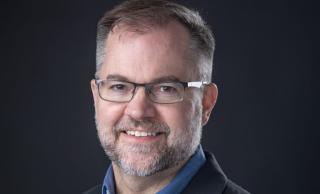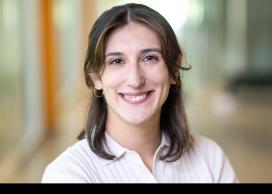Research in focus: Doug Sladen
Learn more about the work of our researchers at UBC

September 15, 2025
Name:
Doug Sladen
My pronouns:
he/him
Title:
Associate Professor
Faculty/Department/Unit:
Faculty of Medicine/School of Audiology and Speech Sciences
Location:
Vancouver
Year I started working at UBC:
2024
Provide an overview of your research in 75 words or less:
Cochlear implants are auditory prosthetics for people who are deaf or hard of hearing and do not benefit from conventional hearing aids. My research is on outcomes post-implantation, focusing on speech perception in quiet and in noise, sound source localization, and health-related quality of life. I work to create real-world listening environments in the lab. Most recently, I've been using virtual reality to examine how implanted people hear in noisy environments.
What first motivated you (or motivates you) to conduct your research?
I was a clinician (audiologist) before completing my Ph.D. and worked directly with patients who were getting cochlear implants. I was struck by the profound impact the device had on their ability to hear and on their overall quality of life and had many questions on which factors were associated with high outcomes.
What do you hope will change as a result of this research?
The goal of my research is to improve our understanding of how to maximize post-implantation performance and improve clinical decision-making.
What have you learned during your research that has surprised you the most?
One surprising occurrence was the success of patients with unilateral (one-sided) hearing loss after getting a cochlear implant. In the past, I believed this patient group would not benefit from a CI, but overall they do very well. It is shocking how well they can hear and it’s thrilling this technology is available to a large group who otherwise don't have many treatment options.
Describe any interesting research milestones you are approaching
We have begun recruiting participants for a new study of auditory training for children who have cochlear implants. The training program can be done at home and may lead to improved overall speech in noise and localization abilities. We will eventually do similar work with adults.
Learn more:
- Our people
- Research
- Research in focus






